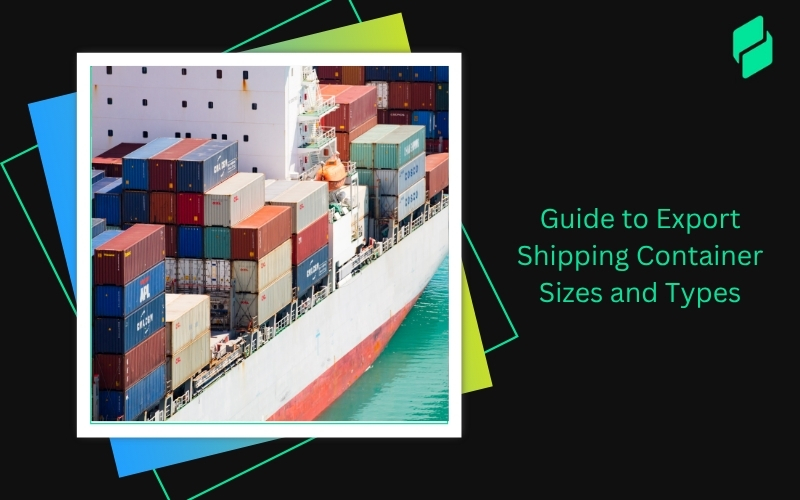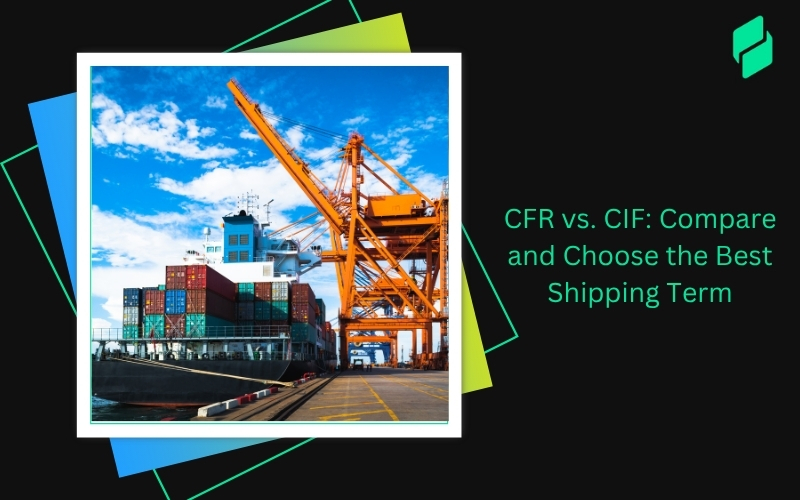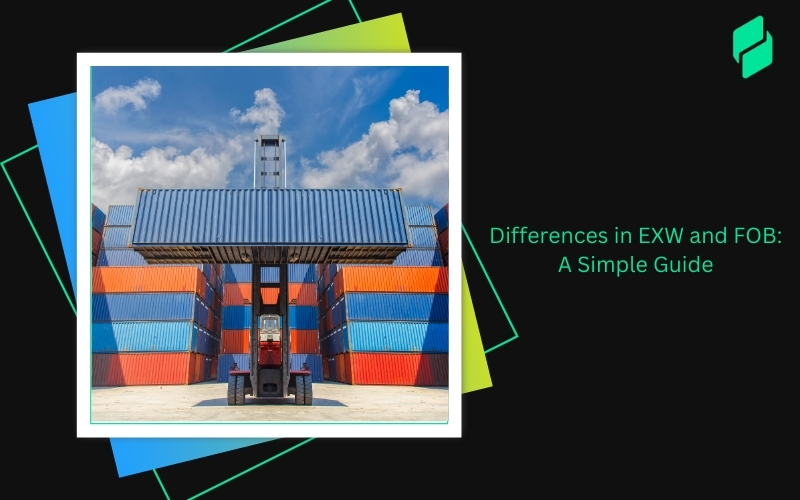Are you wondering about the difference between 3rd and 4th party logistics and how they can impact your business? Understanding these concepts is key to optimizing your supply chain and staying ahead in today's competitive market.
Third-party logistics (3PL) providers focus on handling the essentials of transportation and warehousing, while 4th party logistics (4PL) partners take a more comprehensive approach, managing the entire supply chain.
In this article, we'll explore the distinct roles and advantages of 3PL and 4PL, helping you make informed decisions to enhance your logistics strategy and drive success.
Optimize your business: use unlimited savings with Pazago fulfilled now!
Get Started ->4th Party Logistics (4PL)
Fourth-party logistics (4PL) providers, also known as lead logistics providers (LLPs), are like the managers of the logistics world. They do more than third-party logistics (3PL) providers by overseeing the entire supply chain process. This includes moving goods, fulfilling orders, and managing different 3PLs.
Each 3PL in a 4PL network works on its own, with its own rules and ways of doing things, including how it handles security and customer service.
In short, 4PL providers make sure everything runs smoothly and efficiently in the supply chain.
Third-Party Logistics (3PL)
Third-party logistics (3PL) refers to the practice of outsourcing logistics-related tasks such as inventory management, warehousing, and order fulfillment to another company.
By doing so, e-commerce merchants can focus on other important aspects of their business while using tools and systems to automate order fulfillment.
However, with the advent of e-commerce in the 1990s and 2000s, 3PL became more prevalent, and service providers started offering more services. Today, 3PL is essential for e-commerce businesses, as it combines warehousing and transportation services to streamline the supply chain.
Understanding 4th Party Logistics (4PL)
Outsourced Management
A 4PL provider handles logistics management, covering services offered by 3PL providers and overseeing other elements in the e-commerce supply chain, such as freight forwarding and last-mile logistics.
Relationship Management
The 4PL is responsible for managing relationships with various 3PL providers, in addition to handling tasks like transportation, inventory management, and technology.
Advantages
4PL providers offer scalability by quickly adding warehouses to their network, enabling merchants to expand their distribution network swiftly.
Disadvantages
Challenges include limited quality control, inconsistent customer support, and variability in service.
Operational Role
4PLs act as the central point of contact for operational support and communication with other vendors, streamlining logistics processes for merchants by adopting a more strategic and operational role.
Supply Chain Management
With a 4PL, customers are relieved from managing relationships with multiple vendors, optimizing the retail supply chain, or making logistics decisions.
However, the independence of each warehouse within a 4PL network can lead to inconsistencies in fulfillment.
Asset Ownership
Most 4PLs do not own or lease assets. Instead, they coordinate transportation, warehousing, and shipping services with other logistics companies, working with various vendors, including 3PLs, to optimize the customer's supply chain.
Understanding Third-Party Logistics (3PL)
Outsourcing Logistics:
3PL providers help businesses by taking care of logistics tasks like order fulfillment, warehousing, and transportation.
Specialized Services:
These providers are experts in managing inventory, packaging, and shipping efficiently.
Supporting Growth:
3PLs enable businesses to grow without the need to invest in more infrastructure or staff by offering flexible logistics solutions.
Communication with Customers:
Different 3PL providers offer various levels of communication and involvement in managing the supply chain.
Cost Savings:
By using 3PL services, businesses can reduce their operational costs and focus on their main activities.
Flexibility:
3PL providers can quickly adapt to changes in the supply chain, providing solutions to meet the changing needs of businesses.
Technology Use:
Many 3PL providers use advanced technology to track shipments, manage inventory, and improve logistics operations.
Choosing between 3PL and 4PL services hinges on understanding your business needs. Pazago's platform can offer valuable insights and operational support in either case, helping businesses navigate the complexity of global trade.
With the basics out of the way, let's tackle the big question: what's the real difference between 3PL and 4PL, and why should you care?
Third-Party Logistics (3PL) vs. 4th Party Logistics (4PL)
Alright, so we've dissected them separately; now let's see how 3PLs and 4PLs team up to turbocharge the supply chain.
How 3PLs and 4PLs Work Together?
The Complementary Relationship in Enhancing Supply Chain Efficiency
3PLs and 4PLs work together to make the supply chain more efficient. 3PLs handle the physical tasks like storing and moving goods, while 4PLs focus on the big picture, optimizing the entire supply chain by coordinating various logistics activities.
Strategies for 4PLs to Manage and Optimize 3PL Operations
To get the best out of 3PL partnerships, 4PLs use strategies like
- Integrated Technology Solutions: Using advanced software for real-time tracking and inventory management.
- Customized Logistics Solutions: Creating specific strategies that meet business needs and allow for growth.
- Performance Monitoring: Keeping an eye on how well 3PL services are doing and finding ways to improve.
Importance of Communication, Transparency, and Trust in 3PL and 4PL Collaboration
A successful partnership between 3PLs and 4PLs is built on clear communication, transparency, and trust. Open conversations help set common goals and solve problems, while trust encourages teamwork and innovation.
Feeling a bit overwhelmed with options? Don't worry, we’re about to break down how to choose the right logistics model for your business.
Choosing the Right Logistics Model for Your Business

Factors to Consider When Selecting Between 3PL and 4PL Services
- Consider your business's specific logistics needs and the complexity of your supply chain.
- Assess how much control you want over logistics operations.
- Evaluate your budget and the cost-effectiveness of each model.
Pros and Cons of Integrating 3PL vs. 4PL into Business Operations
Decision-Making Criteria Based on Company Size, Growth Stage, and Supply Chain Complexity
- Small Businesses: Might prefer 3PL for cost-effective, specific logistics solutions.
- Growing Companies: Could choose 4PL for broader supply chain management to support expansion.
- Complex Supply Chains: Businesses with intricate logistics might opt for 4PL for overall optimization.
But hey, why stop at 4PL? Let's take a whirlwind tour through the entire logistics playground, from 1PL to 5PL.
The Distribution Hierarchy: From 1PL to 5PL

From 1PLs to 5PLs, businesses have a lot to consider when deciding on their supply chain. Here's a breakdown of each PL level and how it can benefit your business.
First-Party Logistics (1PL)
- Definition: Involves a business or individual transporting goods from one location to another.
- Example: A farmer delivering carrots to a grocery store for sale.
Second-Party Logistics (2PL)
- Definition: A business hires a private company to transport goods to a destination; the 2PL organization acts as a carrier.
- Example: A carrier delivering carrots from a farm to a grocery store.
Third-Party Logistics (3PL)
- Definition: An associate or service that helps manage the supply chain, including warehousing, order fulfillment, shipping, and distribution.
- Example: A company that packs, stores, and transports carrots from a farm to a grocery store.
Fourth-Party Logistics (4PL)
- Definition: Manufacturers entrust the complete management and organization of their supply chain to an external provider, who oversees the entire supply chain.
- Example: A logistics company managing one or more 3PLs for a farmer and overseeing most or all of the carrot packaging and delivery to the grocery store.
Fifth-Party Logistics (5PL)
- Definition: A company that oversees a vast network of supply chains, typically employing and overseeing other 3PL and 4PL companies for specific tasks.
- Example: A logistics company managing the entire supply chain on behalf of the farmer from production to delivery.
Conclusion
In conclusion, understanding the differences between 3rd and 4th party logistics is essential for businesses looking to improve their supply chain operations.
Whether you choose the more hands-on approach of a 3PL or the comprehensive management provided by a 4PL, the right logistics partner can greatly enhance your efficiency and customer satisfaction.
When evaluating factors such as control and cost-effectiveness, remember that platforms like Pazago are designed to complement and enhance the logistics model you choose by optimizing shipping costs and simplifying the trade process.
Ultimately, the decision between a 3PL and a 4PL will depend on your business's specific requirements and long-term objectives.


.png)








